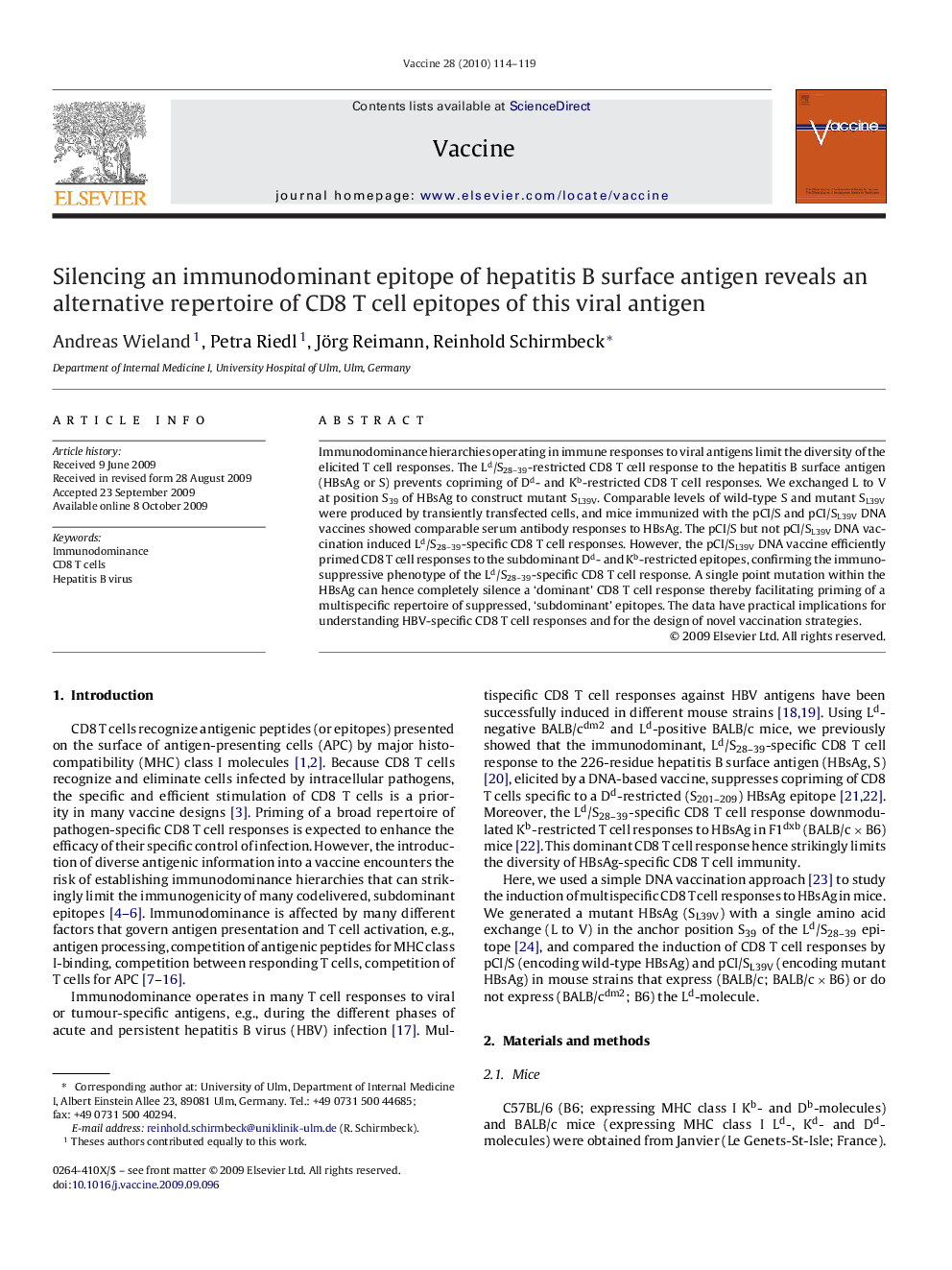| Article ID | Journal | Published Year | Pages | File Type |
|---|---|---|---|---|
| 2404228 | Vaccine | 2009 | 6 Pages |
Immunodominance hierarchies operating in immune responses to viral antigens limit the diversity of the elicited T cell responses. The Ld/S28–39-restricted CD8 T cell response to the hepatitis B surface antigen (HBsAg or S) prevents copriming of Dd- and Kb-restricted CD8 T cell responses. We exchanged L to V at position S39 of HBsAg to construct mutant SL39V. Comparable levels of wild-type S and mutant SL39V were produced by transiently transfected cells, and mice immunized with the pCI/S and pCI/SL39V DNA vaccines showed comparable serum antibody responses to HBsAg. The pCI/S but not pCI/SL39V DNA vaccination induced Ld/S28–39-specific CD8 T cell responses. However, the pCI/SL39V DNA vaccine efficiently primed CD8 T cell responses to the subdominant Dd- and Kb-restricted epitopes, confirming the immunosuppressive phenotype of the Ld/S28–39-specific CD8 T cell response. A single point mutation within the HBsAg can hence completely silence a ‘dominant’ CD8 T cell response thereby facilitating priming of a multispecific repertoire of suppressed, ‘subdominant’ epitopes. The data have practical implications for understanding HBV-specific CD8 T cell responses and for the design of novel vaccination strategies.
